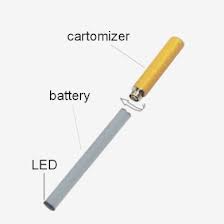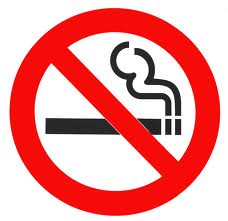E-Cigarettes: Safe Alternative Or Trendy Killer?

Electronic cigarettes have been on the market for quite some time now. Smokers all over the world are trading in their traditional cigarettes for their modern cousins. But with no in depth health studies on the effects of the new fad, how can the adoring masses truly be sure what they are doing is OK?
First of all, it needs to be said that smokers by definition are not going to be as concerned with the effects of e-cigarettes as most non-smokers would be. Why you ask? Because smoker smoke, and they know it's bad for them! So a switch to an electronic cigarette may not need to be healthier. It could simply be more convenient, or cheaper.
The are lots of reasons someone might make the switch, they may think it's healthier for them, they may enjoy not smelling like an ashtray, or maybe they are in it for the cost savings. Either way, people are using them, and the trend does not appear to be slowing down.
What are E-Cigarettes
Electronic cigarettes are not actually smoking paraphernalia at all, there is no tobacco, and there may not even be any nicotine. E-cigarettes are vaporizers and use electricity to heat “e-liquid” into vapor form to be inhaled. What is e-liquid? E-liquid is made up 3-4 main ingredients:
- Propalyne Glycol, (PG)
- Vegetable Glycerine, (VG)
- Flavoring, (Flavor Extracts)
- Nicotine, (optional)
These ingredients vary for different people. For instance, the ratio of the two most plentiful ingredients PG and VG stipulate the amount of “vape” and “throat hit” the user will get. An e-liquid with more PG will have a stronger effect on your throat, or “throat hit,” while e-liquids with more VG will create a larger cloud of vapor or “vape.” Many profesional mixers will give you the option of deciding the ratio, with proper advice mind you. The flavoring can consist of anything you can think of. They inject the flavor into the e-liquid using flavor extracts. Nicotine, the final ingredient is optional. Almost every manufacturer of e-liquid offers varying amounts of nicotine, from “holy crap I feel like I just smoked a truck full of cigarettes,” to none at all. The nicotine is measured in milligrams (mg) and injected into the formula with the other ingredients to create a uniquely blended e-liquid.
The e-cigarettes themselves are also quite simple, depending on the model. There are models of e-cigarettes that have more bells and whistles than my car, but for now, we will stick to the more basic, easy to use models. Electronic cigarettes (for the most part) consist of 2-3 pieces, each with a specific function.
3 Piece

2 Piece

The battery is the life of the e-cigarette. It provides power to the atomizer which acts as a heating coil, converting the liquid in the cartridge into vapor. Now, with any new technology, there are of course advances. There are now many more options involved in e-cigarettes, all with the same end result.
There are two types of batteries, manual and automatic, and they are exactly what they sound like. A manual battery has a small button that activates the e-cigarette, which gives the user more control over their vapor, while the automatic is triggered by sucking air through the mouthpiece, which gives the user the sensation of smoking a real cigarette. It is really just a personal preference.
Now, the 3 piece option offers a cartridge and an atomizer. The cartridge is used to soak up the e-liquid. The atomizer is used as a heating coil to heat the liquid in the cartridge. In the 2 piece version, the cartridge and atomizer duo is replaced by a cartomizer, which is one piece that serves both functions.
E-Cigarettes and Health
To say that electronic cigarettes are a healthy alternative to smoking would be wrong, probably. The truth is nobody know because there hasn't been any rigorous health effects research done. However, in recent months, since the strength of the e-cigarette trend has grown, so has push for adequate research.

The FDA (Food and Drug Administration) and the WHO (World Health Organization) are both adamantly fighting the trend. Both organizations are worried that there isn't sufficient data to deem electronic cigarettes safe for public use. However, since there is no tobacco in an e-cigarette, the FDA's efforts to ban them in the U.S. have failed pending more research. What we do know is that since there is no tobacco, the product does not have age restrictions despite the nicotine.
The FDA published a report stating that they found traces of Diethylene glycol, also remarking that it is found in Antifreeze. This report has received criticism from proponents of electronic cigarettes arguing that Diethylene glycol is also found in toothpaste, wine, cough syrup, and mouthwash. One researcher studying the effects of Diethylene Glycol inhalation on rats found nothing more than a mild irritation in the larynx and nasal turbinates (nasal concha bone).

Possible Smoking Cessation Use
Opponents of electronic cigarettes have made it very clear that they are not to be used as smoking cessation tools, however that's not what everyone says. Dr. Michael Siegel of Boston University School of Public Health says that they have been effective thus far in aiding smokers quit the habbit. Smokers will tell you that cigarettes have three addictions or habits; nicotine, oral, and hand. For anyone who is not aware of oral and hand addictions, they are the habits of having something in your hand and/or mouth. These fixations last longer than nicotine addiction in many smoker who have quit, and is the reason why some have failed. Electronic cigarettes may not have been designed as a smoking cessation product, but if it works for some, I say good on them.
The Future of E-Cigarettes
The biggest problem that we face with e-cigarettes is the unknown. There is simply not enough information and research for organizations like the FDA or WHO to decide whether or not they are safe. Like I said earlier, more research is being conducted now to determine their fate. Only time will tell if e-cigarettes truly are a safer alternative or even more dangerous than the real thing.
What do you think about electronic cigarettes? Do you think they are safer? Should they be banned? Leave a comment below with your opinion.








